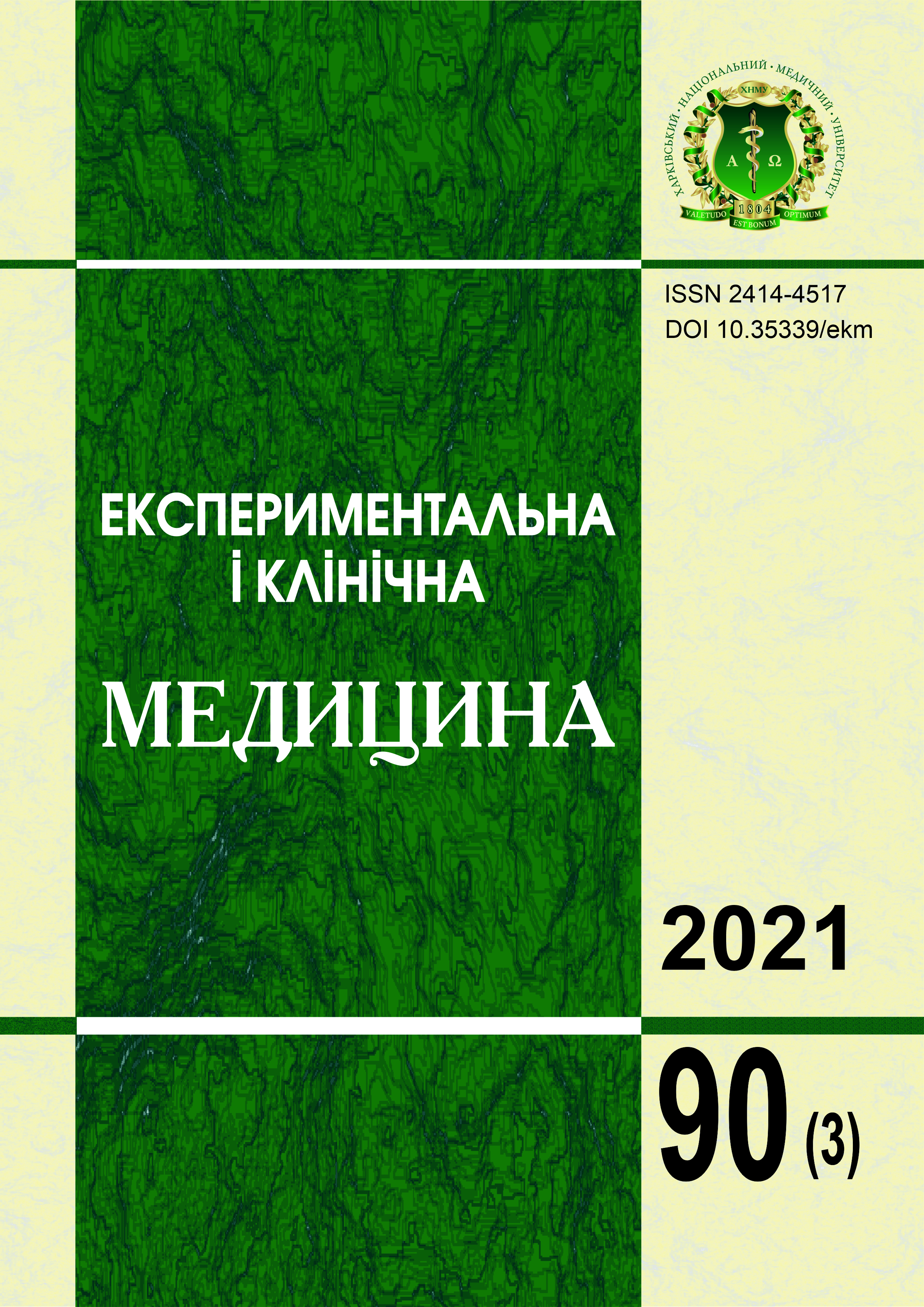Abstract
The presence of human immunodeficiency virus (HIV) as a cause of acquired immunodeficiency remains a medical and social problem despite the success of antiretroviral therapy. Heat shock proteins (heat-shock proteins - HSP) are a family of proteins produced by cells in response to stressful conditions. The aim of the study was to determine the activity of heat shock proteins in the endometrium in the presence of HIV infection. Research groups were formed with 25 cases in each group: a group with HIV infection, a group with a combination of HIV infection and alcoholism, and a control group. An immunohistochemical study was conducted with monoclonal antibodies to HSP70 and HSP90. During the study, it was established that the presence of HIV infection and its combination with chronic alcoholism leads to the development of pathological processes in the endometrium (or in the endometrium) with signs of microcirculatory channel disturbances, sclerotic changes, and a tendency to endometrial atrophy. At the same time, there is a reliable activation of HSP70 and HSP90, which can be a sign of early non-plastic changes in the endometrium. Heat shock proteins are recognized by the immune system and cause further development of humoral and cellular immunity reactions. The level of heat shock proteins increases in the foci of inflammation, and they are also involved in the pathogenetic mechanisms of almost all diseases.The level of HSP70 expression increased from ([1.18±0.12] in the control group up to ([2.27±0.14] in the group of HIV infection and ([2.71±0.13] in the group of combination of chronic alcoholism and HIV infection. The level of HSP90 expression increased from ([0.73±0.09] in the control group up to ([2.13±0.13] in the group of combination of chronic alcoholism and HIV infection ([2.70±0.13] (p<0.05).
Keywords: immune response, transformation, heat-shock proteins.
References
Demirdag Y, Fuleihan R, Orange JS, Yu JE. New primary immunodeficiencies 2021 context and future. Curr Opin Pediatr. 2021;33(6):657-75. DOI: 10.1097/MOP.0000000000001075. PMID: 34670265.
Ballow M, Sanchez-Ramon S, Walter JE. Secondary Immune Deficiency and Primary Immune Deficiency Crossovers: Hematological Malignancies and Autoimmune Diseases. Front Immunol. 2022;13:928062. DOI: 10.3389/fimmu.2022.928062. PMID: 35924244.
Dryden-Peterson S, Bvochora-Nsingo M, Suneja G, Efstathiou JA, Grover S, Chiyapo S, et al. HIV Infection and Survival Among Women With Cervical Cancer. J Clin Oncol. 2016;34(31):3749-57. DOI: 10.1200/JCO.2016.67.9613. PMID: 27573661.
Trimble CL, Method M, Leitao M, Lu K, Ioffe O, Hampton M, Higgins R, et al; Society of Gynecologic Oncology Clinical Practice Committee. Management of endometrial precancers. Obstet Gynecol. 2012;120(5):1160-75. DOI: 10.1097/aog.0b013e31826bb121. PMID: 23090535.
Netto GJ, Epstein JI. Theranostic and prognostic biomarkers: genomic applications in urological malignancies. Pathology. 2010;42(4):384-94. DOI: 10.3109/00313021003779145. PMID: 20438413.
Saini J, Sharma PK. Clinical, Prognostic and Therapeutic Significance of Heat Shock Proteins in Cancer. Curr Drug Targets. 2018;19(13):1478-90. DOI: 10.2174/1389450118666170823121248. PMID: 28831912.
Zininga T, Ramatsui L, Shonhai A. Heat Shock Proteins as Immunomodulants. Molecules. 2018;23(11):2846. DOI: 10.3390/molecules23112846. PMID: 30388847.
Khandia R, Munjal AK, Iqbal HMN, Dhama K. Heat Shock Proteins: Therapeutic Perspectives in Inflammatory Disorders. Recent Pat Inflamm Allergy Drug Discov. 2017;10(2):94-104. DOI: 10.2174/1872213X10666161213163301. PMID: 27978789.
Dabbs DJ, Thompson LDR. Diagnostic Immunohistochemistry: Theranostic and Genomic Applications, Expert Consult: Online and Print, 4th Edition, 2014, 960 p. Available at: https://is.gd/qfH2ON
Gargin V, Radutny R, Titova G, Bibik D, Kirichenko A, Bazhenov O. Application of the computer vision system for evaluation of pathomorphological images. Proceedings of the 2020 IEEE 40th International Conference on Electronics and Nanotechnology (ELNANO). P. 469-73. DOI: 10.1109/ELNANO50318.2020.9088898.
Myers JL, Well AD. Research Design and Statistical Analysis (2nd ed.). USA: Lawrence Erlbaum Associates; 2003. 508 p.
Lytvynenko MV, Narbutova TY, Vasylyev VV, Gargin VV. Indicators of proliferative activity of endometrium in women with immunodeficiency. Azerbaijan Med J. 2021(2):53-60. Available at: https://repo.odmu.edu.ua/xmlui/handle/123456789/11781
Lytvynenko MV, Gargin VV. Triple-negative transformation of the endometrium, cervix and mammary gland on the background of immunodeficiency. Med Perspekt. 2022;27(2):119-24. DOI: 10.26641/2307-0404.2022.2.260284.
Nicol AF, Fernandes AT, Grinsztejn B, et al. Distribution of immune cell subsets and cytokine-producing cells in the uterine cervix of human papillomavirus (HPV)-infected women: influence of HIV-1 coinfection. Diagn Mol Pathol. 2005;14(1):39-47. DOI: 10.1097/01.pas.0000143309.81183.6c.
Condelli V, Crispo F, Pietrafesa M, Russomano F, Silva JRL, Tristаo A, et al. HSP90 Molecular Chaperones, Metabolic Rewiring, and Epigenetics: Impact on Tumor Progression and Perspective for Anticancer Therapy. Cells. 2019;8(6):532. DOI: 10.3390/cells8060532.
Castle PE, Ashfaq R, Ansari F, Muller CY. Immunohistochemical evaluation of heat shock proteins in normal and preinvasive lesions of the cervix. Cancer Lett. 2005;229(2):245-52. DOI: 10.1016/j.canlet.2005.06.045.
Genest O, Wickner S, Doyle SM. Hsp90 and Hsp70 chaperones: Collaborators in protein remodeling. J Biol Chem. 2019;294(6):2109-20. DOI: 10.1074/jbc.REV118.002806. PMID: 30401745.
Boysen M, Kityk R, Mayer MP. Hsp70- and Hsp90-Mediated Regulation of the Conformation of p53 DNA Binding Domain and p53 Cancer Variants. Mol Cell. 2019;74(4):831-43.e4. DOI: 10.1016/j.molcel.2019.03.032. PMID: 31027880.
Thalhammer J, Kindle G, Nieters A, Rusch S, Seppanen MRJ, Fischer A, et al. Initial presenting manifestations in 16,486 patients with inborn errors of immunity include infections and noninfectious manifestations. J Allergy Clin Immunol. 2021;148(5):1332-41.e5. DOI: 10.1016/j.jaci.2021.04.015. PMID: 33895260.

